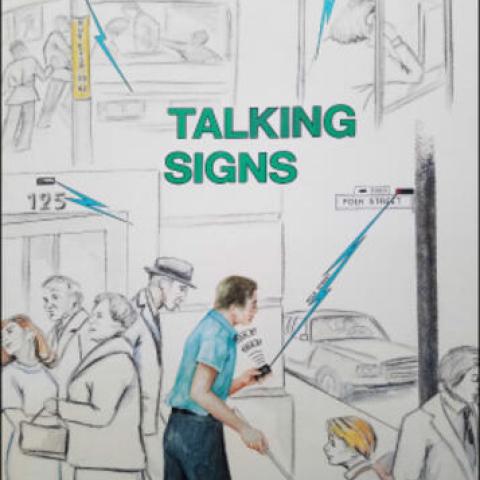

- Principal Investigator:
- John Brabyn
For 40 years Smith-Kettlewell and NIDILRR have been improving wayfinding for blind travelers. Talking Signs, originally created by Smith-Kettlewell inventor William Loughborough in 1979 as Talking Lights, was a system of infrared transmitters and receivers allowing blind and visually impaired travelers to quickly and easily "read signs" at a distance. Infrared transmitters could be used indoors or out, providing an accessible accommodation for any kind of signage. The recorded messages from the transmitters were converted into sound by the hand-held receivers, clear and strong when pointed directly at the transmitter, but becoming staticky and less distinct when pointed away. Through the 1980s and 1990s researchers including William Crandall, Roberta Klatzky, and James Marston demonstrated the effectiveness of Talking Signs for blind travelers. Manufacturers such as Mitsubishi began to produce transmitters and receivers, and many thousands of Talking Signs were installed in cities such as San Francisco, Seattle, New York, and Washington DC.
While the power and simplicity of the directional infrared transmitters was difficult to improve upon and the technology was undeniably successful, the question of who would pay for large scale transmitter installation and receiver distribution proved insurmountable, and Talking Signs were never adopted broadly enough to make them a universal accommodation. In 2016, Smith-Kettlewell scientist Joshua Miele, conceptualized and developed a Virtual Talking Signs app that eliminated the need for transmitter installation or receiver distribution. overTHERE, a free iOS app, uses an iPhone to simulate the experience of using a Talking Signs receiver, complete with the changing audio signal as the iPhone is pointed toward and away from the signs. Instead of installed transmitters, overTHERE uses Google Places to associate virtual signs with businesses, bus stops, and other landmarks. Smith-Kettlewell's continuity of research and development from Talking Lights to overTHERE has been a 40-year journey of discovery and improvement, with ongoing support from NIDILRR and ever-increasing benefits for blind travelers. The free overTHERE app currently speaks over 20 languages, is growing in popularity, and is already in daily use by thousands of blind travelers all over the world.

